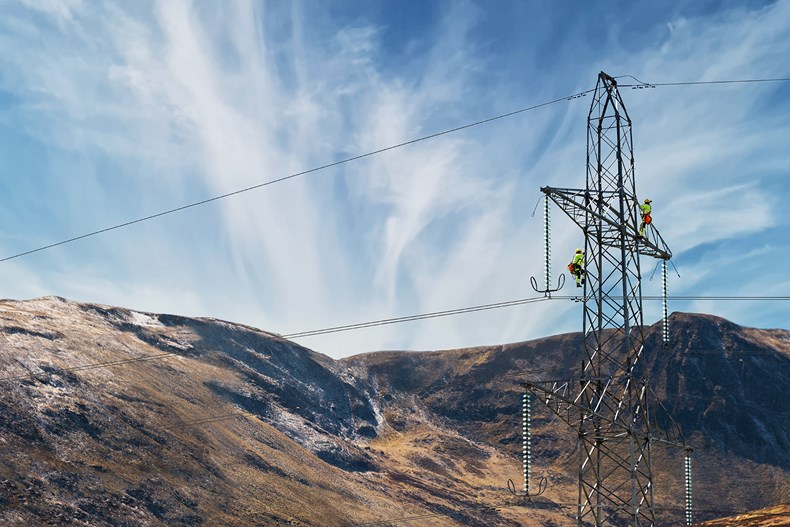’Pathway to 2030’ underpins £7bn+ investment in north of Scotland transmission network
07 Jul 2022
- SSEN Transmission welcomes today’s publication by National Grid ESO of the ’Pathway to 2030’
- The blueprint confirms the need for over £7bn of investment in electricity transmission infrastructure in north of Scotland, providing greater confidence to SSE’s expected RAV forecast
- A policy document is to be published in following months, the Energy Networks Strategic Framework, which is expected to include details about expediting regulatory approvals to support accelerated delivery of the 2030 investment plan
Major additional Projects included in the ‘Pathway to 2030’
The ’Pathway to 2030’ sets out the blueprint for the electricity transmission network infrastructure required to enable the forecast growth in renewable electricity across Great Britain, including the UK and Scottish Governments 2030 offshore wind targets of 50GW and 11GW.
For the north of Scotland, this confirms the need for over £7bn of investment in onshore electricity transmission infrastructure, with the following reinforcements required to deliver 2030 targets, several of which will require accelerated delivery to meet 2030 connection dates:
- two 2GW subsea high-voltage direct current (HVDC) links from Peterhead to England: Eastern Green Link 2 (EGL2), connecting to Drax for 2029; and EGL4 connecting to South Humber. Both links will be taken forward as joint ventures with National Grid Electricity Transmission (NGET);
- a 2GW subsea HVDC link from Spittal in Caithness, connecting to Peterhead;
- a 1.8GW subsea HVDC link from the Western Isles, connecting to the north of Scotland mainland;
- 400kV onshore reinforcements, between Beauly, Blackhillock, New Deer and Peterhead; between Beauly, Loch Buidhe and Spittal; and between Kintore, Tealing and Westfield; and
- an upgrade of the existing Beauly to Denny line to enable 400kV operation on both circuits.
Alongside and co-ordinated with the ‘Pathway to 2030’ investments, a new HVDC Switching Station at Peterhead, ‘Project Aquila’, will be developed by SSEN Transmission to accelerate the development of offshore wind. By integrating HVDC systems through multi-terminal and multi-vendor interoperability, this will help reduce the number of HVDC Convertor Stations required for future HVDC links, reducing costs and minimising community and environmental impacts. This innovation has today been announced as one of the UK Government’s successful first tranche ‘Pathfinder’ projects, which are being progressed under the BEIS led Offshore Transmission Network Review Early Opportunities workstream.
Further investments will be needed to realise ScotWind’s full ambition, with the ESO expected to publish a follow up exercise in Q1 2023 setting out the additional network reinforcements required.
Investing in a net zero network
The essential reinforcements signalled in the ‘Pathway to 2030’ support SSE’s Net Zero Acceleration Programme, which was updated in May to signal that SSEN Transmission’s gross RAV was expected to reach over £12bn by 2031.
Whilst final investment will depend on Ofgem approval and all necessary planning consents, these investment recommendations provide even greater confidence in both this target and SSE’s expectation that its investment in Great Britain’s electricity infrastructure system could exceed £24bn this decade.
A framework for successful delivery
The need for these reinforcements has been further underlined with the recent British Energy Security Strategy. This set out the UK Government’s plans to reduce the UK’s dependence on imported gas via the deployment of homegrown low carbon electricity generation supported by robust electricity network infrastructure. At its heart was a focus on expediting regulatory approvals and planning consents, both of which SSEN Transmission considers integral to accelerating the delivery of several key reinforcements that are required to meet 2030 targets.
In the coming months, BEIS and Ofgem are due to publish the Energy Networks Strategic Framework setting out how the commitments in the British Energy Security Strategy will be delivered to support accelerated delivery. SSEN Transmission believes this needs to fast track regulatory approval of the 2030 plan as a GB wide package of works, provide certainty of TO delivery, alongside planning reform to expedite consenting. SSEN Transmission will continue to work constructively with BEIS and Ofgem to support the timely delivery of the 2030 plan and associated policy development, and with the Scottish Government on consenting, given planning policy is devolved.
"Today’s publication of the Pathway to 2030 marks a huge step forward for those wanting an electricity system independent of imported gas, reducing our price exposure to volatile global wholesale markets and helping deliver long term energy affordability."
Rob McDonald Managing Director of SSEN Transmission
Rob continued: “With over £7bn of investment in grid infrastructure in the north of Scotland alone, this blueprint will unlock Scotland’s vast offshore wind resources by connecting the huge renewable energy potential of wind energy needed to meet legally binding emissions reduction targets. This major investment will also provide huge economic opportunities for communities across the north of Scotland, supporting thousands of skilled jobs, as we continue to deliver a network for net zero emissions in the north of Scotland.
“Key to accelerating delivery of this unprecedented programme of investment will be a robust regulatory framework that fast tracks regulatory approvals as a package of works, provides certainty of delivery, alongside reform of the planning system to expedite consenting.
“We now look forward to working constructively with the UK and Scottish Governments, Ofgem, our supply chain, the wider energy industry and our stakeholders to deliver the timely, coordinated and efficient investment in grid infrastructure that is key to deliver 2030 targets and a pathway to net zero.”


